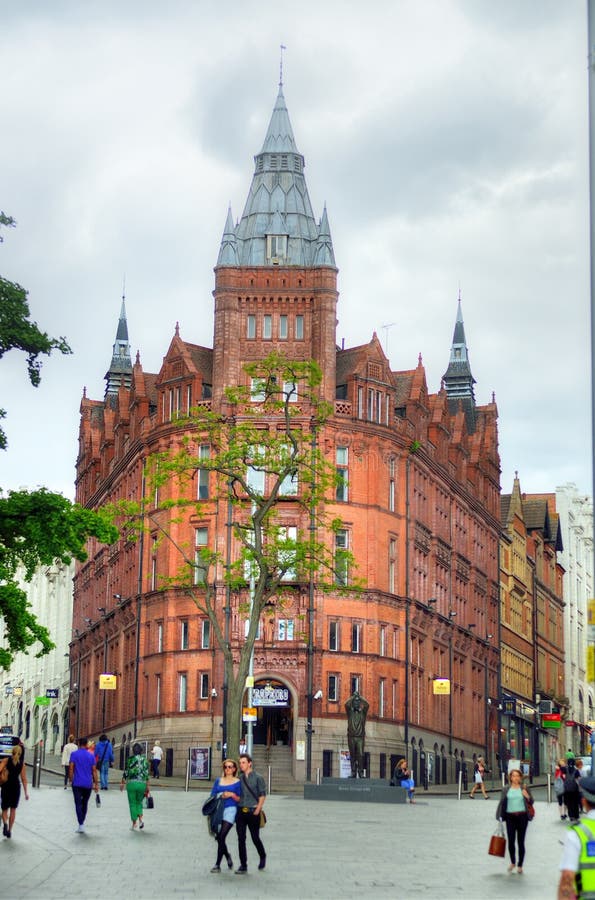

Planters lined with a box hedge are filled with 4,000 colourful flowering bulbs, perennials and 800 shrubs that provide a living frame to the square, changing constantly in accordance with the season. The planting creates a sense of intimacy in the space lines of plants create a layer of separation from the activity of Long Row and the tram stop.


Their tapering forms create rows of benches, whilst others form planters. These colours reflect the range of stone used in the surrounding building facades and also delineate level changes. New terraces providing significantly more seating than before and are formed of grey, black, white and beige granite blocks. It is accessible to vehicles for staging events, setting up markets and creating the backdrops required for a variety of performances. The central market square is composed of a large light coloured surface of slip resistant granite from Portugal that compliments the Portland stone of the Council House. The materials have been designed and selected to be sympathetic to their context and robust enough to stand the test of time. Many UK public squares are dominated by road traffic, signage and street furniture however collaboration with city planners has resulted in a clutter free, contemporary design. The predominant material is granite, to reflect the importance of the space and provide a long design life. The new design incorporates the organic topography of the original medieval square, and accommodates existing falls by gradual level changes for wheelchair users and drainage. The intention was to create a space that still felt calm when busy yet animated when empty. One of the aims of the design was to reinforce the squares connections to busy shopping areas and cultural quarters. Pedestrian activity and public realm studies were commissioned which revealed that 78% of people crossing the space avoided the centre due to the many steps and low walls. Final consideration was given by a distinguished Design Jury, which selected the Gustafson Porter + Bowman scheme unanimously. This process involved an exhibition in the Council House and shopping centres, and an online voting system. Gustafson Porter + Bowman were among six short listed entrants, whose schemes were developed for public consultation. It also had to create a sense of place and reinforce the distinctive qualities and character of Nottingham. The brief was to provide unhindered access for all, use high quality materials, provide new water features, introduce soft landscaping, integrate street furniture, create flexible performance space, allow people to linger, encourage 24 hour use, enable perimeter activity to spill out into the space, and attract pedestrians by virtue of its design. In 2004, the City’s Development Department organised an international design competition. It also compromised the city’s ability to stage civic and cultural events, and the lack of suitable lighting also contributed to an unwelcoming atmosphere at night. Disabled access had become an important consideration, with the formal design of the earlier scheme and its numerous low walls and steps difficult to negotiate. Having achieved the status of one of Britain’s eight ‘Core’ cities in 2001, many people felt that the square did not reflect Nottingham’s ambitions and aspirations, but if redeveloped, it could be the catalyst for greater change. Both the square and building were completed in 1929, and the square was listed in 1994. Its regeneration by Gustafson Porter + Bowman 2005-2007 involved the replacement of a design by T.C.Howitt, architect of the square and the adjacent Council House building. At 11,500m2, it is the second largest in Britain after London’s Trafalgar Square. Gustafson Porter + Bowman: Old Market Square in Nottingham is one of the oldest public squares in the UK with an 800 year history as a market place.


 0 kommentar(er)
0 kommentar(er)
